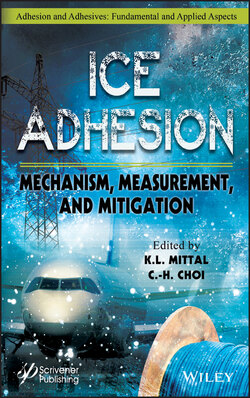Читать книгу Ice Adhesion - Группа авторов - Страница 48
3.2 Ice Growth
ОглавлениеAlthough ice nucleation is governed by the thermodynamics of ice-water-surface system, further ice growth is controlled by heat transfer. As ice nucleation occurs, release of freezing enthalpy leads to the temperature increase at water-ice interface. In fact, heat transfer at water-ice interface controls ice growth rate. Here, in order to obtain a theory of ice growth, it is assumed that water-ice interface is flat and the curvature at this interface is ignored. Considering this assumption, Gibbs-Thomson undercooling effect becomes negligible. Gibbs-Thomson undercooling effect is the effect of ice-water interface curvature on the temperature of freezing front. This effect causes the temperature of freezing front to be different from equilibrium melting temperature [20, 21]. We consider that the temperature of freezing front stays at equilibrium temperature of Tf. In case one considers the undercooling effect (ΔT), the equilibrium temperature at water-ice interface should be replaced by Tf – ΔT. Also, airflow around the droplet is a parameter that should be taken into account. To consider airflow effect, two extreme cases of ice growth are defined. The first one is a droplet in an environment without airflow and the second one is a droplet in an environment with airflow surrounding the droplet.
